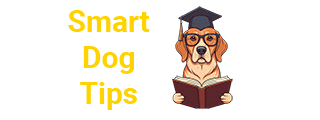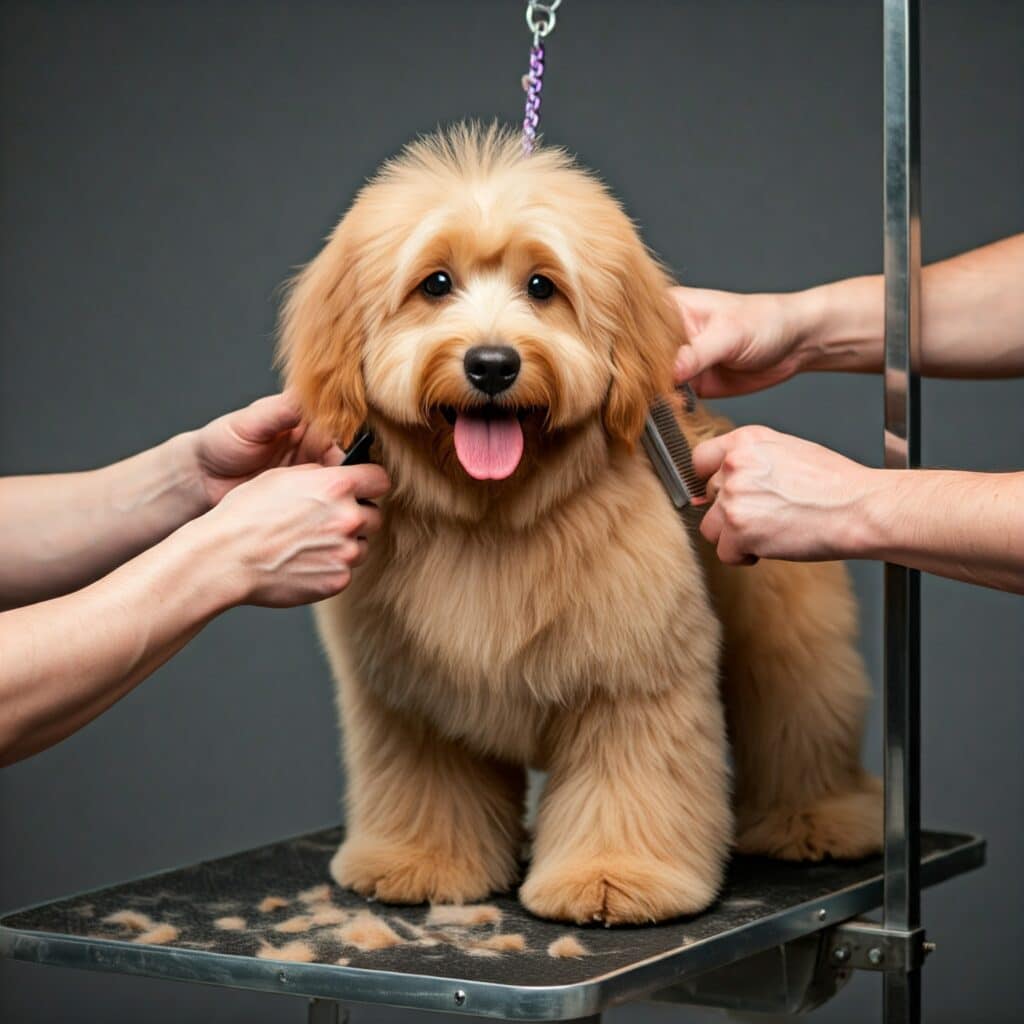Grooming your dog is an essential part of their care routine. Not only does it help to keep your dog clean, healthy, and comfortable, but it also strengthens the bond between you and your furry companion. Whether your dog has short or long fur, grooming should be a regular activity that involves more than just brushing. This guide will walk you through the necessary steps and techniques for grooming your dog effectively and safely.
Why Is Dog Grooming Important?
Before diving into the “how,” let’s briefly touch on why grooming is important for your dog. Regular grooming helps in:
- Maintaining Cleanliness: It removes dirt, debris, and loose hair that can accumulate in your dog’s coat, especially if they spend time outdoors.
- Promoting Healthy Skin and Coat: Brushing distributes natural oils, preventing matting and tangling. It also promotes circulation, helping the skin to stay healthy.
- Prevention of Health Issues: Regular grooming allows you to spot signs of skin infections, parasites, or abnormalities early. It’s an excellent time to check for ticks, hot spots, rashes, or dry patches.
- Reducing Shedding: Especially for long-haired breeds, brushing can significantly reduce shedding, keeping your home cleaner and preventing mats from forming.
- Comfort: Grooming provides a chance to trim nails, clean ears, and bathe your dog, which helps keep them comfortable and hygienic.
Tools You’ll Need for Grooming Your Dog
Before you start, make sure you have the proper tools. The right grooming supplies will make the process easier for both you and your dog.
- Brush: The type of brush you need depends on your dog’s coat type. Slicker brushes are great for longer, dense coats, while bristle brushes work best for short-haired dogs.
- Combs: A wide-toothed comb can help detangle hair, while a finer-toothed comb is good for checking for fleas and debris.
- Nail Clippers: Dog nail clippers or a nail grinder will help you trim your dog’s nails safely.
- Shampoo: Use a gentle dog-specific shampoo, not human shampoo, as dogs have different skin pH levels.
- Towels: You’ll need towels for drying your dog after a bath.
- Ear Cleaner: A dog-friendly ear cleaner will help keep your dog’s ears free of wax and debris.
- Drying Tools: A blow dryer designed for dogs or a regular hairdryer on a low, cool setting can help speed up drying.
Step-by-Step Guide to Grooming Your Dog
1. Brushing Your Dog’s Coat
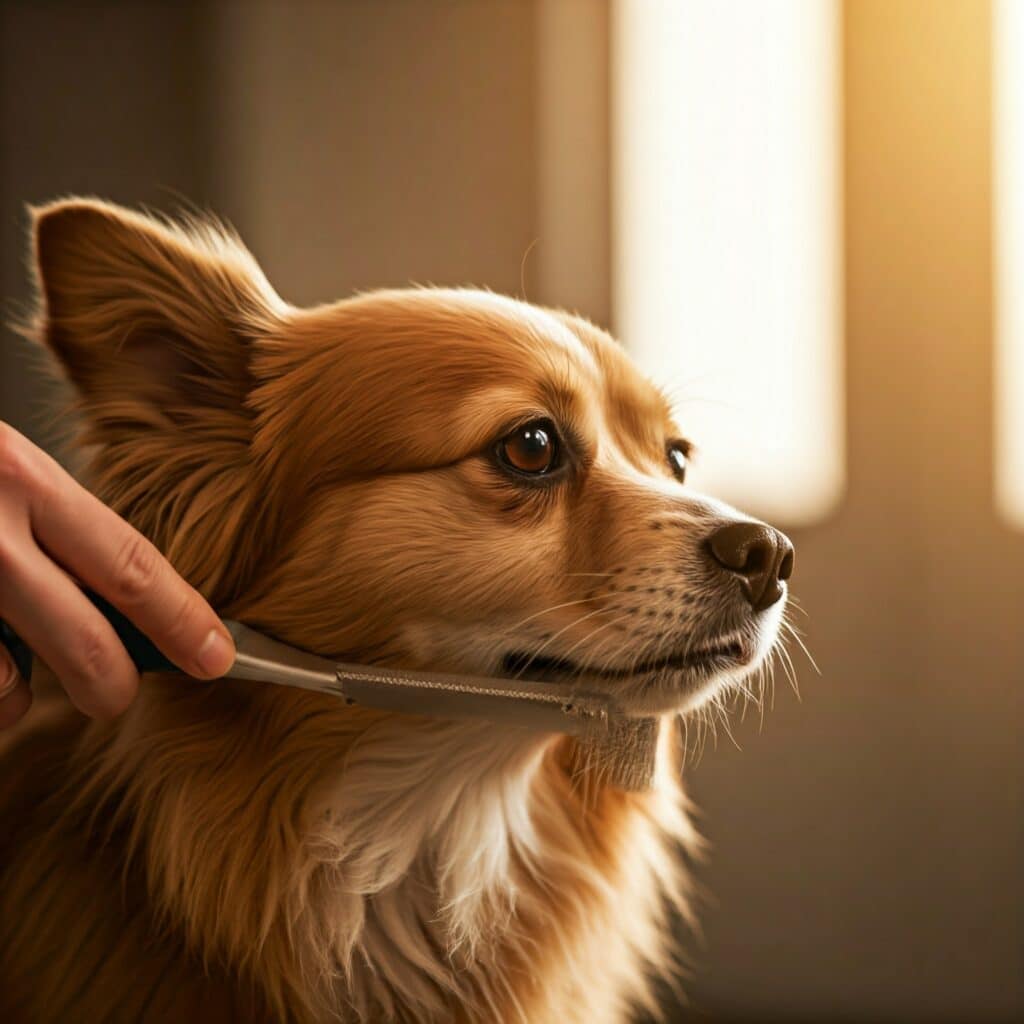
The first step in grooming is always brushing. Brushing not only helps keep your dog’s coat clean, but it also gives you a chance to check for skin issues, parasites, or unusual lumps.
- Short-Haired Dogs: For dogs with short coats, a bristle brush or a rubber grooming mitt should suffice. Gently brush your dog in the direction of hair growth to remove loose fur, dirt, and debris. This should be done at least once a week, though dogs that shed a lot may need more frequent brushing.
- Long-Haired Dogs: Long-haired dogs require more attention. Start with a slicker brush or a comb designed for their coat type. Be gentle, as pulling on mats or tangles can be painful. If you come across a knot, carefully detangle it with your fingers or a comb before brushing through. Brush your dog’s coat from the base up to ensure you remove all tangles and mats. Long-haired dogs may need brushing every other day, especially during shedding season.
- De-shedding: If you have a breed that sheds excessively, consider using a de-shedding tool like the Furminator. These tools remove undercoat hair and help control shedding. Be sure to brush gently to avoid causing discomfort.
2. Bathing Your Dog
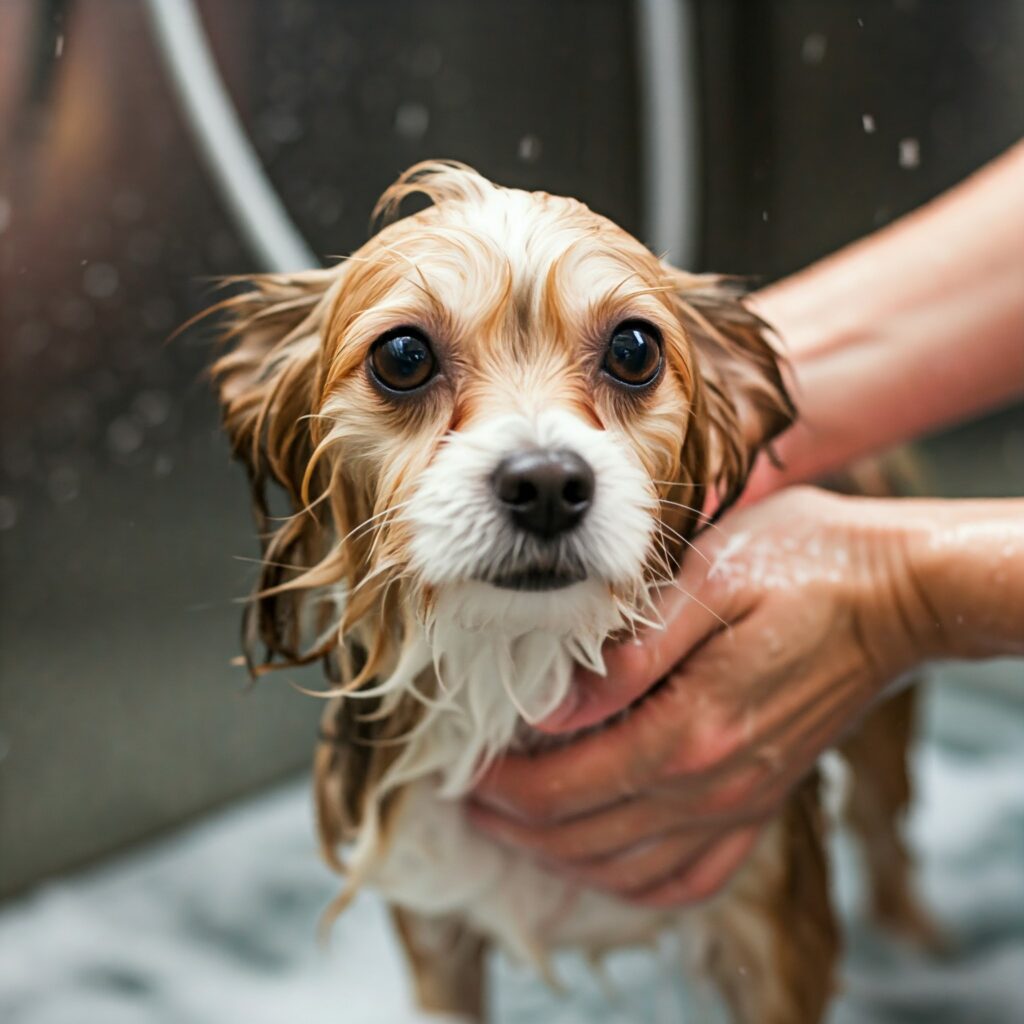
How often you bathe your dog depends on their breed, coat, and lifestyle. Generally, dogs should be bathed every 4 to 6 weeks, but active dogs that spend a lot of time outside may need more frequent baths.
- Preparation: Before you start, ensure that you have everything you need within reach: shampoo, towels, and a cup or spray nozzle for rinsing. Always use a dog-specific shampoo, as human products can irritate their skin.
- Bathing Process: Start by wetting your dog’s coat with lukewarm water. Use a cup or gentle spray nozzle to wet the fur. Apply a small amount of dog shampoo and lather it up. Be careful not to get shampoo in your dog’s eyes, ears, or nose. If your dog has sensitive skin, you can use a hypoallergenic shampoo.
- Rinsing: Thoroughly rinse your dog to ensure that no shampoo is left in their fur. Leftover soap can cause itching or dryness.
- Drying: Towel-dry your dog gently to remove excess water. If your dog is comfortable with it, use a blow dryer on a low, cool setting. Drying the dog’s coat helps to prevent matting and promotes a shiny, healthy appearance.
3. Nail Trimming
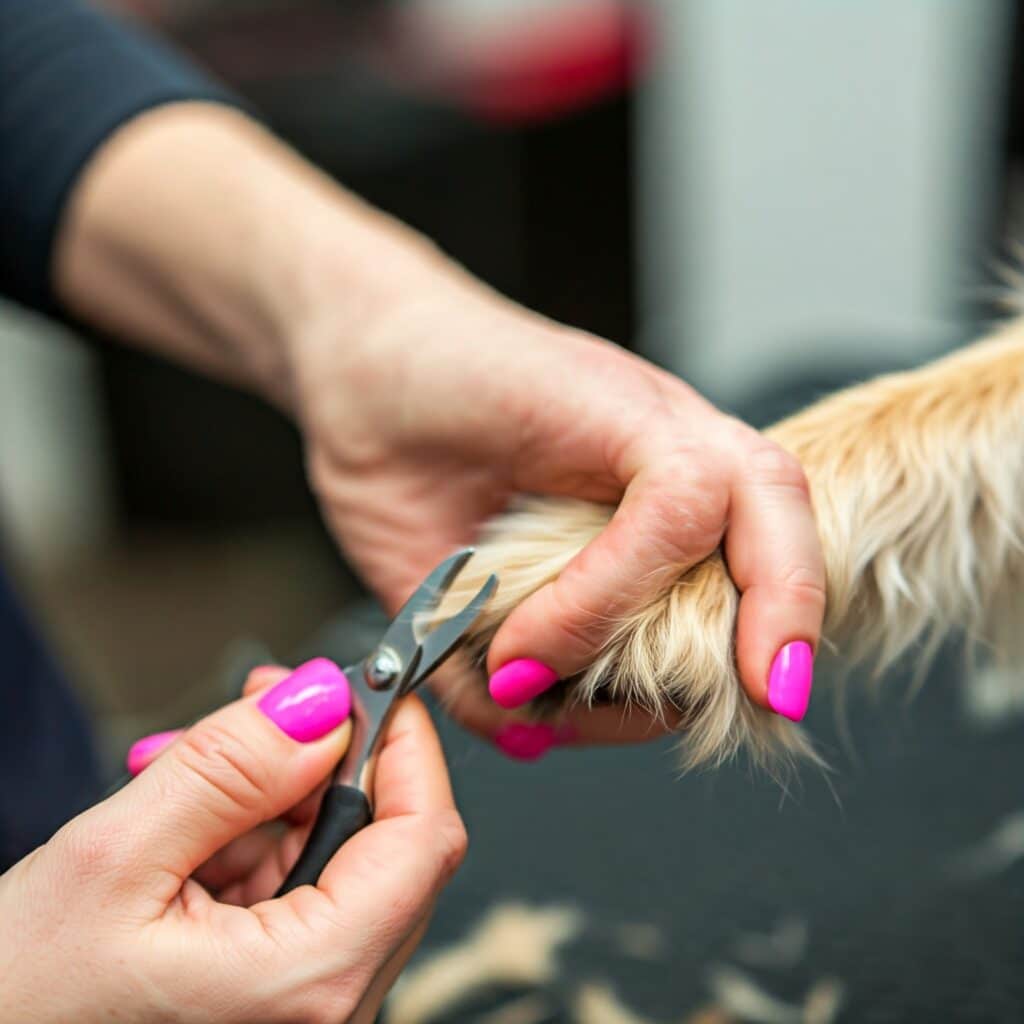
Trimming your dog’s nails is crucial for their health and comfort. Long nails can cause pain, affect their walking, and lead to potential injury.
- How to Trim Nails: Hold your dog’s paw gently and carefully trim the nail with a dog nail clipper. Be cautious not to cut too close to the quick (the pinkish part inside the nail), as this can cause bleeding. If you’re unsure, start by trimming small amounts, and remember, it’s always safer to trim less than too much.
- Alternatives: If you’re not comfortable using clippers, you can use a dog nail grinder, which gently files down the nails.
- Frequency: Depending on your dog’s activity level, you may need to trim their nails every 3 to 4 weeks.
4. Ear Cleaning
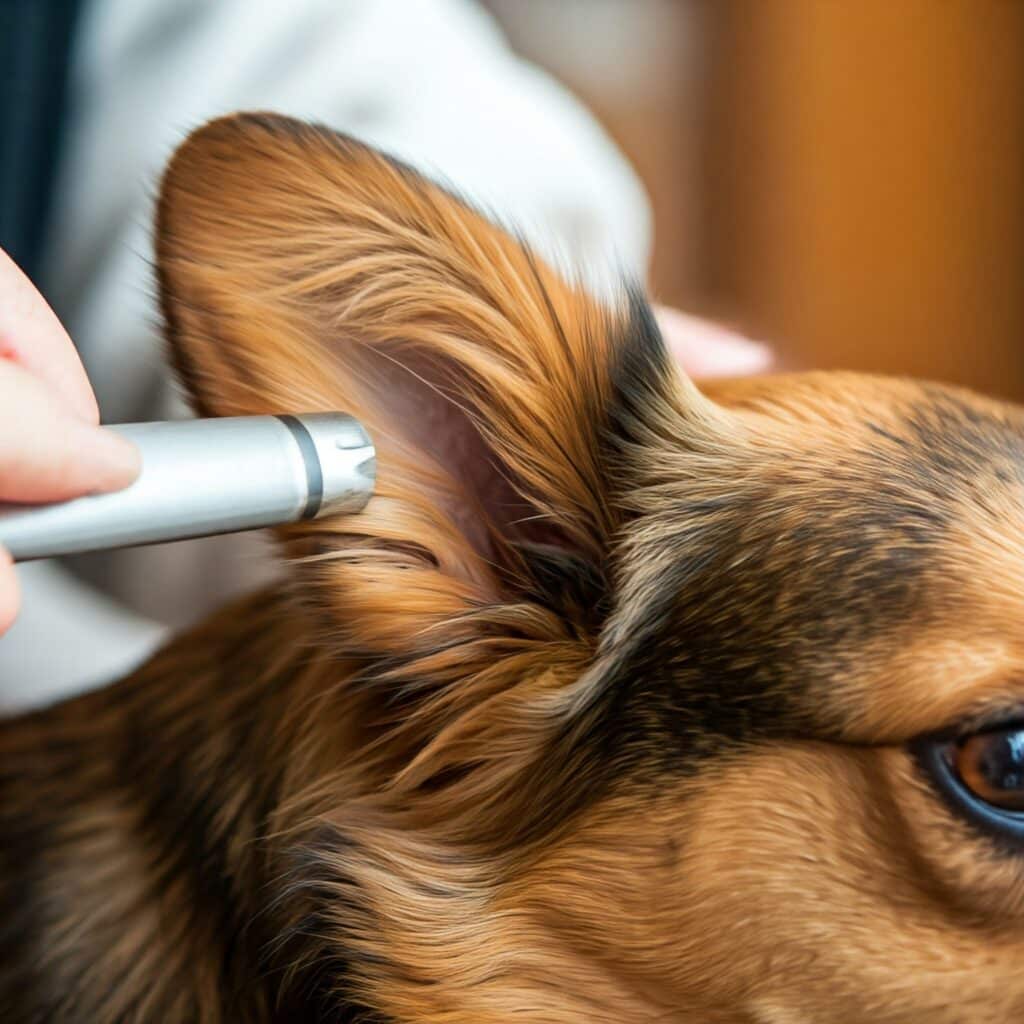
Regular ear cleaning helps prevent infections, especially for dogs with floppy ears or those prone to ear problems (like Cocker Spaniels or Bulldogs).
- How to Clean Ears: Use a dog-specific ear cleaner and a cotton ball or gauze pad. Gently wipe the inside of your dog’s ear flap, avoiding the ear canal. If you see wax or dirt inside the ear, it’s okay to gently clean it, but never insert anything into the ear canal.
- Frequency: Check your dog’s ears weekly and clean them as necessary. If your dog is prone to ear infections, your vet may recommend more frequent cleaning.
5. Teeth Brushing
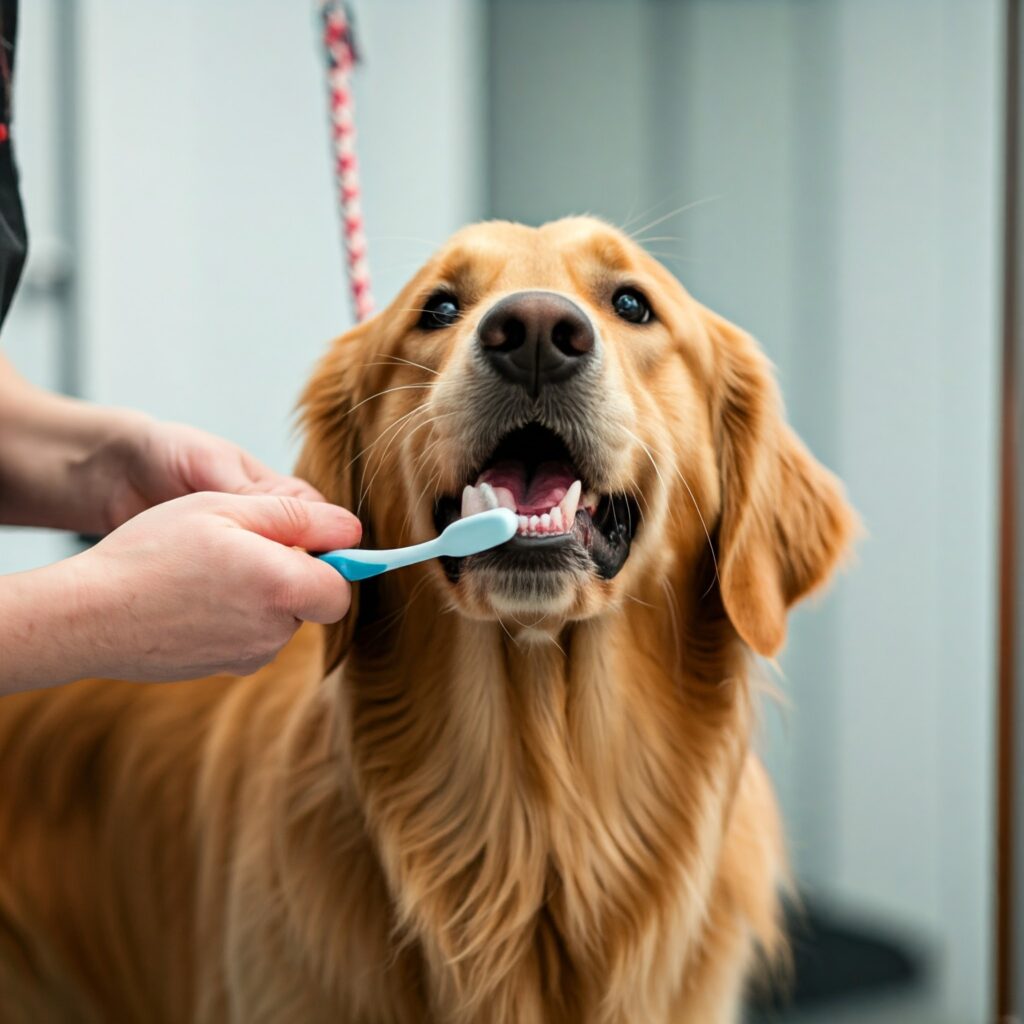
Oral health is just as important as external grooming. Brushing your dog’s teeth helps prevent bad breath, tartar buildup, and gum disease.
- How to Brush Teeth: Use a dog toothbrush and toothpaste (never use human toothpaste). Gently lift your dog’s lip and brush in small circular motions. Start slow and reward your dog with treats to make the process more enjoyable.
- Frequency: Aim to brush your dog’s teeth at least a few times a week. If that’s not possible, provide dental chews or treats to help maintain oral health.
Final Tips for Successful Grooming
- Stay Calm: Some dogs may not be used to grooming, so patience is key. Keep sessions short and positive.
- Regular Grooming Routine: Establishing a routine helps your dog get used to the process and makes grooming easier over time.
- Watch for Signs of Discomfort: If your dog seems particularly sensitive, check for skin issues, mats, or painful areas that may need extra attention.
- Seek Professional Help: If you’re unsure about any aspect of grooming (such as nail trimming or haircuts), don’t hesitate to take your dog to a professional groomer.
Conclusion
Regular grooming is a vital part of keeping your dog happy and healthy. It not only enhances their physical well-being but also strengthens the bond between you and your pet. With the right tools, patience, and a gentle approach, you can turn grooming into a positive experience that both you and your dog look forward to. Whether you choose to handle grooming yourself or rely on professional groomers, maintaining a consistent grooming routine will ensure your dog’s coat stays beautiful, and they stay comfortable and healthy for years to come.
